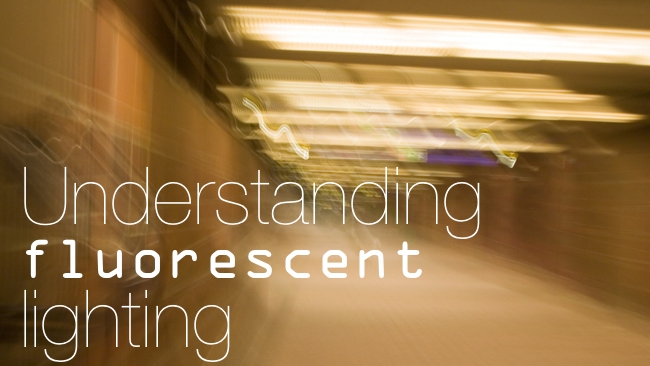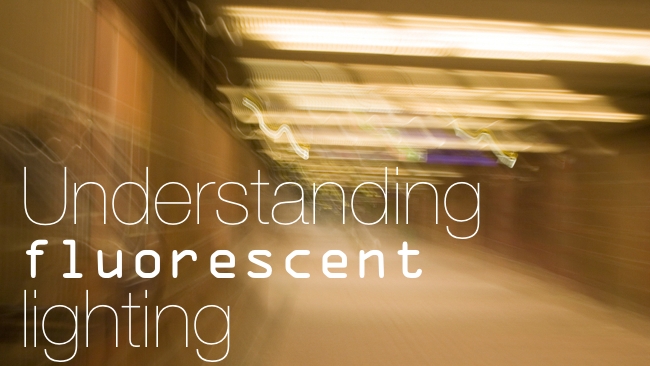
 Fluorescent lighting
Fluorescent lighting
I’m quite often approached by people holding pictures of the sort of fluorescent lights sold at DIY stores as task lighting, and asked if they’re any good for film and TV work. The answer is, well, maybe
Apart from the usability of whatever sort of light pattern these devices actually emit, there are two principal concerns with this: flicker and colorimetry.
The simplest, and oldest, of these problems is flicker, the factor that makes street lighting, neon signs and computer monitors pulsate when shot at certain frame rates. Most people understand that this is caused by an interplay between the stroboscopic flashing of the light source and the rate at which the camera photographs individual frames. This was, traditionally, a problem most commonly encountered with fluorescent tubes, and that’s probably still the most likely way to see it.
Big lumps of metal
The reason this happens is that fluorescent tubes, in common with a lot of other gas discharge lighting, are or were usually controlled using a current-limiting ballast made of fairly simple electrical components. These designs principally rely on inductive devices made of big lumps of metal with wire wound around them, which control the current through the lamp but don’t alter the 50 or 60-cycle variation in brightness caused by the alternating-current mains supply. The rising price of big lumps of metal, particularly copper, as well as the elimination of that characteristic visible flashing at switch-on and the potential for increased efficiency, were all motives to replace these primitive iron ballasts with an electronic alternative. For various complicated reasons, it’s actually easier to build electronic ballasts which fire energy into the lamps at high frequencies, meaning that the light turns on and off many tens of thousands of times a second, as opposed to a few tens. This is invariably fast enough to solve flicker problems on camera.
Electronic ballasts in both fluorescent and other types of discharge lighting are by no means ubiquitous, with the older iron type being somewhat cheaper and possibly more reliable long-term, so there’s a great installed base of them which are now decades old but still working fine. However, it’s no longer difficult to find electronically-ballasted fluorescent lamps – it’s even possible to replace iron ballasts with electronic ones – and flicker is therefore nowhere near the problem it used to be.
Colour
Colour is a slightly more pressing issue. Most fluorescent tubes that are not specifically described as being of high colour quality are designed to look good to the human eye, and as we’re all painfully aware, that’s not nearly good enough for film and TV work. I won’t go into the details of how colorimetry for electronic cinematography works in this article – we’ve covered that before – but it’s certainly possible to buy specially-designed tubes which advertise a high colour rendering index. For this reason, it’s a good idea to seek fittings that will accept a common tube type, such as the ubiquitous 4-foot, 36 watt that’s used by the hundred in office blocks the world over, and which are available in dozens upon dozens of specialist varieties. You can even get colour effect types, including green or blue ones ideal for illuminating chromakey backdrops.
So, depending on your requirements, yes, you can use DIY work lights to illuminate your indie masterpieces, especially if you aren’t too concerned about beautiful skintones while you’re illuminating either backgrounds or subjects that’ll be graded heavily later. Fine, it’s never going to be a Kino-flo; they use uprated electrodes in the tubes, larger-diameter tubes for better power handling and guarantee close colour matching. Even so, with a bit of effort, it’s certainly possible to find – or even straightforwardly build – fluorescent lights which don’t have too many caveats.
Tags: Production


Comments